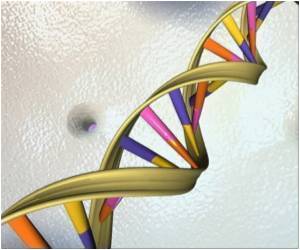
But what if we had cancer treatments that worked more like a computer program, which can perform actions based on conditional statements? Then, a treatment would kill a cell if --and only if-- the cell had been diagnosed with a mutation. Only the defective cells would be destroyed, virtually eliminating unwanted side effects.
With support from the National Science Foundation (NSF), researchers at the California Institute of Technology have created conditional small RNA molecules to perform this task. Their strategy uses characteristics that are built into our DNA and RNA to separate the diagnosis and treatment steps.
"The molecules are able to detect a mutation within a cancer cell, and then change conformation to activate a therapeutic response in the cancer cell, while remaining inactive in cells that lack the cancer mutation," claims Niles Pierce, co-author of a recent study which appears in the September 6 issue of Proceedings of the National Academy of Sciences (PNAS).
This work is part of the Molecular Programming Project, funded by NSF's Directorate for Computer & Information Science & Engineering. One of the goals of the project is to increase understanding of how information can be stored and processed by molecules, and how we might create practical applications that utilize that information.
At the heart of this approach is ribonucleic acid or RNA, and all of the normal tasks it performs each and every day to keep our cells alive and healthy. RNA is the relatively short-lived counterpart of DNA, the coding system that stores full copies of our entire genome within almost every cell of our body. If we think of DNA as information stored on the hard drive of a computer, then RNA is like information stored on a more volatile kind of memory like RAM -- which is erased when you switch off your computer.
Advertisement
"By de-coupling diagnosis and treatment, we can create molecules that are both highly selective and highly effective in killing cancer cells," said Pierce. "Conceptually, small conditional RNAs have the potential to transform cancer treatment because they change what we can expect from a molecule. Many years of work remain to establish whether this conceptual promise can be realized in human patients."
Advertisement
In the PNAS study, researchers demonstrated that this approach effectively eliminates lab-grown human brain, prostate and bone cancer cells in a mutation-specific manner. Future experiments will determine whether the treatment is effective on a larger scale.
Source-Eurekalert









